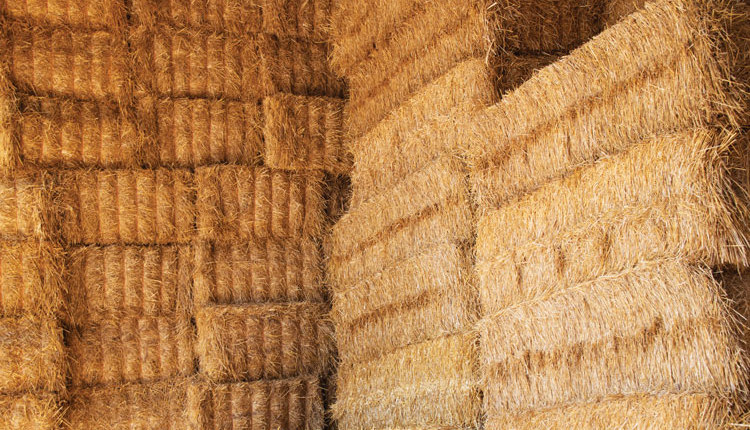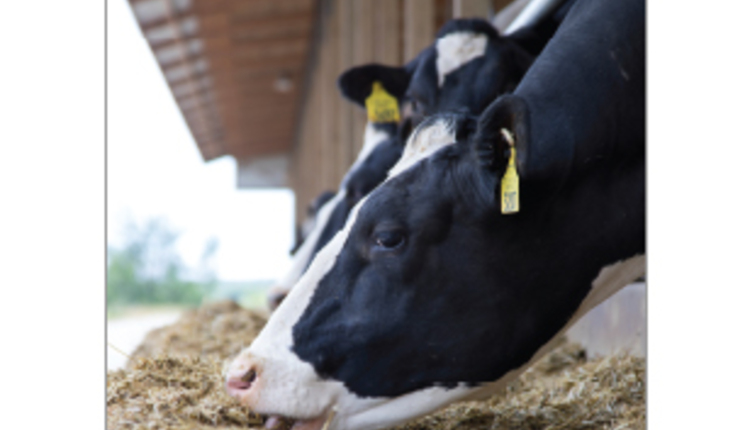 "Rethinking your feeding options for 2013" was the topic of discussion on yesterday's (October) Hoard's Dairyman webinar presented by Mike Hutjens, University of Illinois. Drought-stressed feed, low yields and high prices force dairy producers to look ahead at what their options are moving into next year. Zinpro Performance Mineral sponsored the webinar. Learn more about the sponsor at www.zinpro.com/dairy.
"Rethinking your feeding options for 2013" was the topic of discussion on yesterday's (October) Hoard's Dairyman webinar presented by Mike Hutjens, University of Illinois. Drought-stressed feed, low yields and high prices force dairy producers to look ahead at what their options are moving into next year. Zinpro Performance Mineral sponsored the webinar. Learn more about the sponsor at www.zinpro.com/dairy.Strategy 1: Lower your costs in 2012
Hutjens challenged listeners to look at income over feed costs, feed efficiency, feed cost per pound of dry matter, feed cost per 100 pounds of milk produced and feed costs per cow. Hutjens used a ration with Illinois-based feed prices and had a $7.33 price tag to feed each milking cow per day. A $20 per hundredweight price for milk was needed just to break-even.
Strategy 2: Evaluate your forage status at the farm
If it looks like you will be short of forage, look to cull cows with reproductive issues, high somatic cell counts and low producing cows. Another consideration is to sell lower-end young stock. Hutjens found that raising heifers costs $1,700. But we could currently buy heifers for $1,500. Obviously, heifers that will not be profitable as milk cows should be culled before calving.
Adding by-product feeds to your rations can also help stretch your feed supply. He recommends purchasing forages now so that inventory is not depleted before next year's forage is ready.
Strategy 3: Calculate "good buys"
Depending on where you live, feed prices will vary for many reasons including growing costs and transportation. Hutjens demonstrated FeedVal 2012 and Sesame, two programs that can determine if a feed is a good buy, based on its nutrient value and cost. Details on these programs can be found on the webinar at www.hoards.com/webinars by the end of the week.
Strategy 4: Find "free feed"
While feed will not magically appear on your dairy, there are ways to keep it from disappearing before it can be fed to cows. He suggests monitoring weigh-backs to see how much extra feed is being left in the manger, with a goal of 1 to 2 percent. (In normal years up to 5 percent is acceptable.) Another way to control lost feed is to look for feed that is trapped in equipment (tires, ledges and so forth) or spilled. Wind and birds can fly away with your valuable inventory, while rain damage can soak up portions of good quality feed. Some dairies even pay bonuses to feeders when the ration is mixed within 5 percent of the specifications, because excess feed or short supplies in a ration can cause bigger problems in the long run. Another way to prevent losses includes covering bales with plastic or tarps, and storing hay on palates or under cover.
Strategy 5: Control your risk
With the weather this year, there is greater risk not only to feed quantity, but quality. Corn silage can be susceptible to aflatoxins, mycotoxins, yeast, mold and nitrates due to this year's climate. Hutjens shared reports from two feed laboratories on the current feed tests and how that can affect milk quality through residues. He recommends testing your feeds and removing any at-risk feeds immediately to avoid the costly problem of dumping a tank of milk due to residues. Your milk cooperative can help you by monitoring milk weekly for any changes as producers begin to feed from this fall's crops.
Hutjens believes 2013 will be a challenging year, but high producing cows will still be profit centers. Good decisions should be the same when made with $16 or $22 per hundredweight. Focus on forages, by-products, feed additive selection, and starch as economical and healthy strategies. And Hutjens reiterated his Golden Rule: Never give up milk production. Don't make sacrifices that will not benefit you or your cows in the long term.









